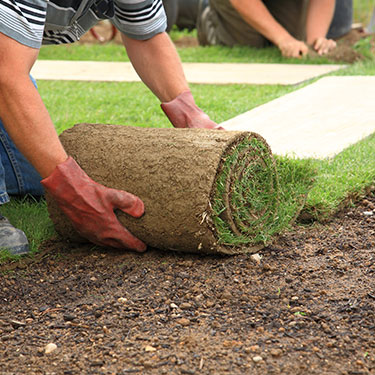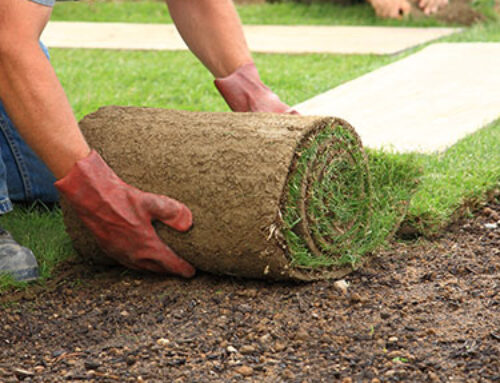Proper soil preparation prior to grass planting is critical to ensure the establishment of a quality turf. Preparation determines how quickly the lawn becomes established and its long-term maintenance requirements. Soil should be prepared whether you are planting a new lawn or replanting an old one and whether you are seeding or propagating vegetatively.
The following provides general guidelines for preparing to plant a lawn.
Clean and Rough Grade
Remove all construction debris, brush, large roots, rocks, weeds, and old tree stumps. If the area needs extensive grading, remove the topsoil and stockpile it for replacement after the rough grade is established. Slope the ground away from the house at a 1 percent to 2 percent decline (the ground should decline six inches to a foot every 50 feet). The rough grade should conform to the final grade after the topsoil is replaced. Swales or mounds with steep slopes of more than 10 percent should be sodded and not seeded to avoid erosion problems. Avoid steep slopes and mounds since it may be difficult to establish grass on them and mowing may be dangerous. If an area cannot be leveled, use groundcover plants other than turfgrass.
Control of perennial weeds such as Bermudagrass and torpedograss should be performed during site preparation. Several applications of a nonselective herbicide such as glyphosate (Roundup®) may be necessary for complete weed control.
Soil Analysis
You should always obtain a soil analysis before planting. Take a representative soil sample by collecting small plugs or garden trowels of the top 6 inches of soil at 10 to 15 locations around the yard. Combine and mix these samples thoroughly and allow them to air dry. When your soil mixture is dry, submit a subsample (approximately 1 cup) to the Florida Extension Soil Testing Laboratory for analysis.
Soil samples can be analyzed for pH, lime requirement and available plant nutrients (P, K, Ca, and Mg). A soil pH test will indicate whether pH adjustment is necessary. If the pH test indicates the soil is too acidic (pH is too low), the laboratory will run a lime requirement test to determine the amount of dolomitic limestone (dolomite) you should apply to increase the soil pH. The lime requirement test is essential. It takes into account not only the soil pH but the soil’s ability to resist changes in pH (called its “buffering capacity”) as well, so that you apply neither too much nor too little lime. Soil pH adjustments should be done before a lawn is planted.
Installation of Irrigation Equipment
If you want to install an irrigation system, it should be designed by an irrigation specialist and installed according to design specifications before you plant grass. An irrigation system’s capacity to perform properly is limited by its design, construction, and operation. A poorly designed or improperly installed system will never operate satisfactorily.
For professional residential or commercial lawn or landscaping planting services in St Johns County, Julington Creek Plantation, Durbin Creek, Nocatee. and surrounding communities. Call or contact us today.
The preceding information provided for informational purposes. Experts courtesy of: UF/IFAS. “Preparing to Plant a Florida Lawn“; Photo: Courtesy flikr®; Moyan Brenn





